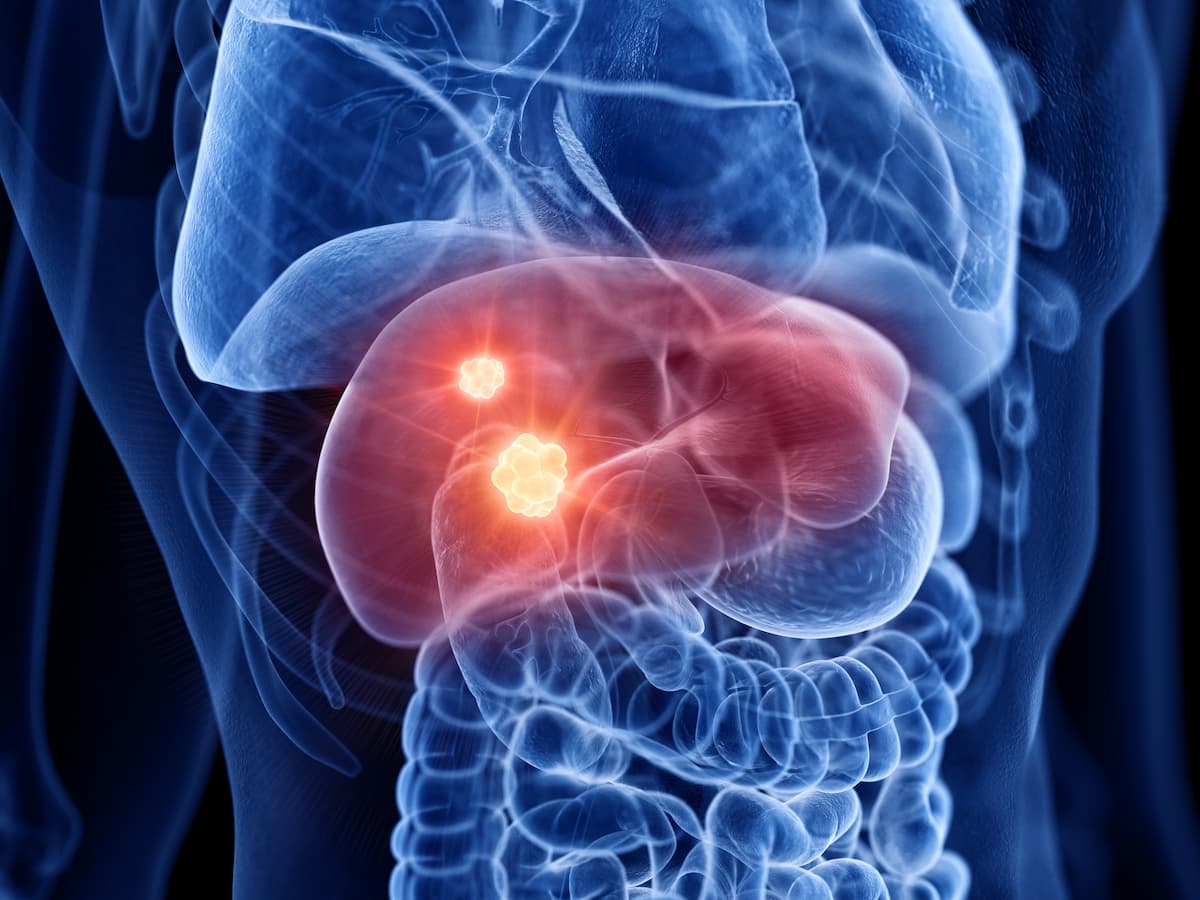Video
How Oncology Practices Are Identifying, Addressing Health Needs Amid Pandemic
Through risk stratification and identifying social determinants of health, oncology practices are monitoring the direct and indirect effects of the pandemic, noted Jenifer Leaf Jaeger, MD, MPH, senior medical director of HealthEC.
Through risk stratification and identification of social determinants of health that are known to impact health care delivery, oncology practices are monitoring the direct and indirect effects of the pandemic, said Jenifer Leaf Jaeger, MD, MPH, senior medical director of HealthEC.
Transcript
AJMC®: Hello, I'm Matthew Gavidia. Today on MJH Life Sciences’ Medical World News, The American Journal of Managed Care® is pleased to welcome Dr Jenifer Leaf Jaeger, senior medical director at HealthEC. Can you just introduce yourself and tell us a little bit about your work?
Dr Jaeger: Yes, Hi! So, my name is Jenifer. I'm a physician trained in pediatric infectious diseases and pediatric urgent care. Prior to joining HealthEC, I was the interim medical director for about a year followed by the director of the Infectious Disease Bureau and director of population health for the Boston Public Health Commission, which is the Boston City Health Department.
Prior to that, I have worked with [the] CDC as an epidemic intelligence service officer working on H1N1, which were the first few US cases, and I also worked on ebola preparedness for the New York City Health Department.
AJMC®: To start us off, can you discuss what you saw with oncology patients during the early days of the COVID-19 outbreak? What were you hearing from peers, customers, and the industry as a whole?
Dr Jaeger: Now being in population health and on the IT end, I'm not seeing any patients directly, but we work very closely with our clients and many who are direct providers, and certainly are talking to folks since then to see what they're seeing, and, of course, scouring the literature to make sure that you're up on what's going on.
In the very, very beginning, what we knew really came out of China, and the percentage of oncology patients who were infected with COVID-19 were relatively small, and so the data weren't as robust, but it was certainly concerning–suggesting that folks who are immune compromised would have much more severe course with COVID, and that makes sense. As an infectious disease doctor, most folks who have an impaired immune response, whether it's cellular or antibody, have a difficult time handling infections of all sorts, particularly viruses.
So, we were particularly concerned that we make sure that we could identify among that population...risk stratify those who are at highest risk for having severe infection. So, certainly anybody with cancer would be at highest risk. If you're talking to a large multistate oncology practice that has nearly 100,000 oncology patients, to say everybody's at risk doesn't allow them to risk stratify at all. So, we really had to dig in deep and take a look at how else to risk stratify that population. But the literature to answer the question is, what were we seeing initially: higher, much higher levels of folks who were having severe infection and/or those folks dying of COVID-19.
Then it seemed that it decreased over time. When you look at populations that are stratified, just by, let's say, immune compromised, that includes folks who have cancer, those who have had solid organ transplants, HIV, or folks who are on immunomodulatory therapy for autoimmune diseases, and those are very different populations. So, sometimes it's difficult to understand exactly what we're seeing.
Right now, it does appear that individuals who have cancer, depending on what type of cancer, [they] might have a more severe infection. But depending on the type of cancer and maybe what type of therapy they're receiving, it may be that the increased risk isn't as great. So, fortunately, a lot more data needs to be collected for us to make any definitive statements.
AJMC®: What was HealthEC’s initial reaction and action to support your oncology practice and medical group customers? And additionally, can you give an example from one of your customer sites?
Dr Jaeger: What we do at HealthEC is 2-fold. One is data analytics, where we're using our ability to use prospective risk scoring and modeling, as well as machine learning and AI [artificial intelligence] to collect data, analyze it, crunch it, and hopefully make something impactful come from that.
The other part of it is care management, and so taking those data and actually developing a program that allows us to support care managers, nurse practitioners, or even community health workers in the field, with all the various assessments that need to go on, in addition to actual medical care. Here we talk about access to care, social determinants of health, and a variety of other issues.
So, part of our focus was actually on both of these areas. From the standpoint of the very first thing that we did within the first few weeks of seeing what was happening in the United States, we were able to develop a COVID-19 program. The first was developing an algorithm that would accurately predict those at highest risk for severe disease. The program that we designed, actually took into account numerous factors, including what was published through CDC, WHO, and the experience in China, as well as public health officials on the ground within numerous countries, including China, Germany, Italy, who were seeing a number of these cases early on. As well as doing risk analytics and using predictive risk modeling based on the type of impatient.
So, for instance, with oncology patients, we would use C3, which is the cancer comorbidity index. We had Johns Hopkins that was looking at the privately insured or ACO [accountable care organization] group, and then, of course, HCC [Hierarchical Condition Category coding] looking at Medicare populations, and they're very different.
In fact, there's an article I'll refer to later that actually looked at risk with COVID-19 and treatments in either the insured, privately insured, or the Medicare Advantage group–they had different effects. But not even knowing that, we were looking at this in the very beginning, as well as the history of utilization and cost, and throwing in a number of different factors. We were able to generate a list for all of our clients within the first few weeks of those at highest risk, either 10%, or if that was still too large, a number for an individual practice to reach out to effectively within the first week or so, and that was our goal: how many people could they reach? Or, could they reach the highest risk population within that first week and assess where they were. If it's going to take you a month to reach them, that's not okay.
So, in certain cases, we needed to break it down to about the top 1%, and we were able to actually effectively do that. One of our clients that has nearly 100,000 oncology patients, in several different states, a couple dozen practices, independently evaluated our risk and our risk group, and found that it correlated very well with their own group. And in addition, we identified an additional 25% of patients that they hadn't specifically identified and found that, in fact, these are the people that had already been suffering or were at highest risk and were able to then identify their additional needs–who needed to come in from a cancer treatment standpoint, who was well enough that they could stay home and avoid exposure, and then assess from there.
That's where the care management part of this comes in. The impacts of social isolation are numerous, including impaired access to care. So, are they getting their medication? Are they getting nutrition? Are they getting social support? So, being isolated means there's increased risk of depression, fall risk, and pain is increased when you're depressed and associated with chronic conditions and cancer.
So, there are a number of issues where not having the ability to lay eyes on routine care or your family isn't able to lay eyes on their parent or grandparent increases the risk that there are problems down the line that aren't being identified. So, our intent was, who could be managed successfully and safely through telemedicine and then who actually needed to be brought in. That was our goal, and the feedback that we're receiving from our clients is that it’s been very effective.
AJMC®: You just alluded to this, but what role do social determinants of health play in cancer care? With and without COVID-19?
Dr Jaeger: Quite a bit, and even more so during a pandemic, with so many unknowns where never before have we had so many people isolated. Again, out of sight can't be out of mind in this particular case. So, the first that I mentioned is just basic access. Do they have access to adequate nutrition, to their medications, whether that's for cancer or for anything else–diabetes, anemia, or really anything else.
What are their transportation risks? A lot of folks are not going to take, and particularly those who are immunocompromised were suggested, not to take public transportation. And if that's your only way of getting around, then how are you able to make your appointments if, in fact, you need to be seen?
So, the impact on this group, particularly those who are elderly, and more infirmed, and for whom transport is difficult anyway. A lot of folks would be calling Ubers or private cabs and didn't want to do that either. So, I think that's probably one of the most important things that we learned was that the access in this case was critical, and the digital divide at this point becomes also important.
We know that about 70%-85%, maybe even more, 95% of folks, have cell phones, and maybe 75%-85% have smartphones. When you're looking at the elderly and low SES [socioeconomic status] populations, or urban populations, some of these folks do not have smartphones, and don't spend time using Zoom like we are now. So, the impact of social isolation at that point becomes critical, because you're not even able to lay eyes on your patients.
The next is looking, again, as I mentioned, [at] the unintended consequences of the social distancing, meaning depression and risks of fall, pain, these other assessments need to be made through, again, telehealth. The others are really taking a look at–in addition to the care for COVID-19–so, are they critically ill and need to be seen. When it comes to the oncology population, elective doesn't mean nonurgent.
So, staging still needs to go on. MRIs still need to happen, biopsies still need to happen, and your infusions still need to happen. Some of these, they're not heart attack level or accident level that somebody says, "Okay, this is not urgent, this is an emergent issue," but these are critical nonetheless. Some of the deferred care we need to wait a couple years down the line, maybe to see what the impacts are from that standpoint.















